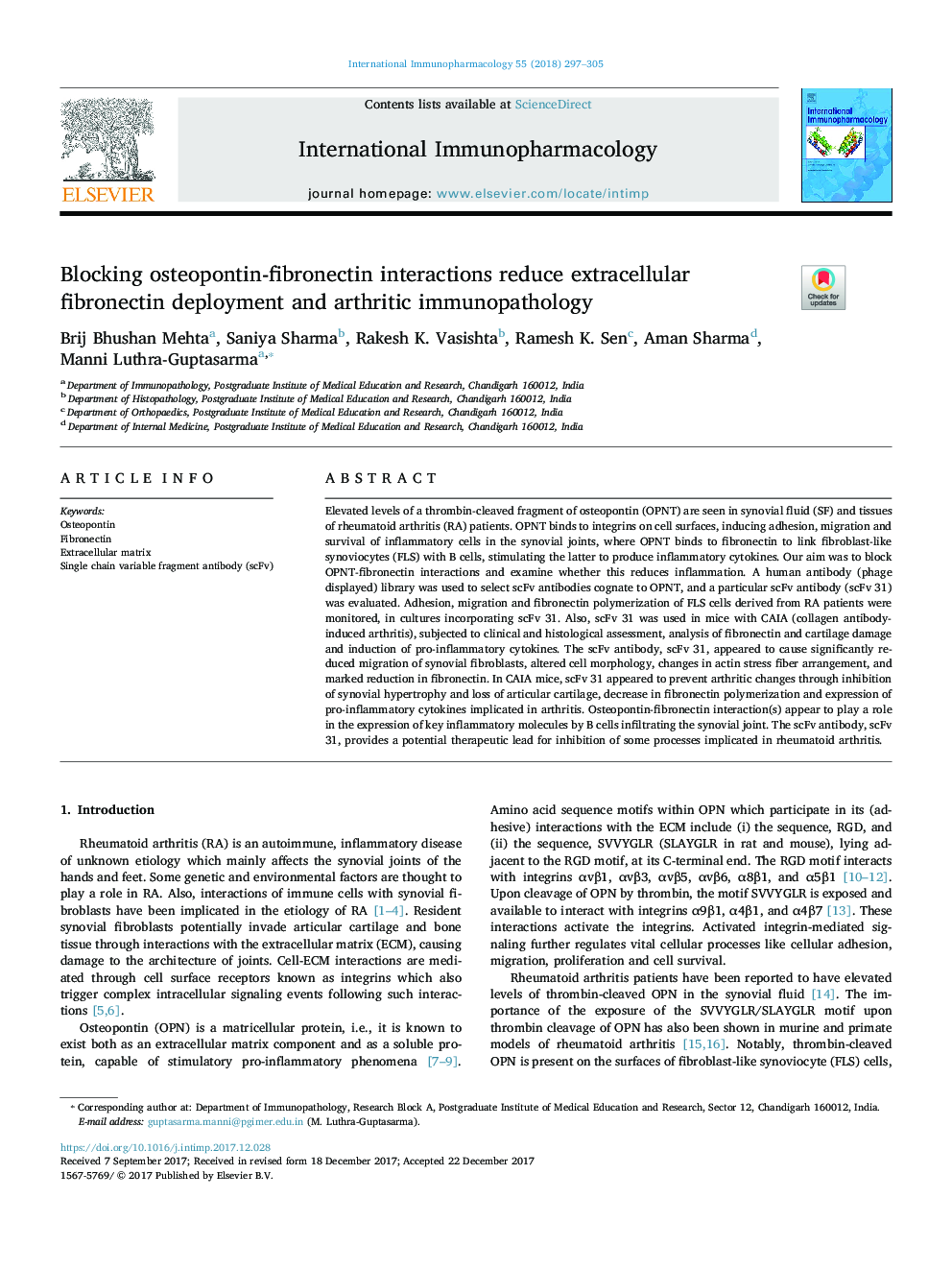| Article ID | Journal | Published Year | Pages | File Type |
|---|---|---|---|---|
| 8531492 | International Immunopharmacology | 2018 | 9 Pages |
Abstract
Elevated levels of a thrombin-cleaved fragment of osteopontin (OPNT) are seen in synovial fluid (SF) and tissues of rheumatoid arthritis (RA) patients. OPNT binds to integrins on cell surfaces, inducing adhesion, migration and survival of inflammatory cells in the synovial joints, where OPNT binds to fibronectin to link fibroblast-like synoviocytes (FLS) with B cells, stimulating the latter to produce inflammatory cytokines. Our aim was to block OPNT-fibronectin interactions and examine whether this reduces inflammation. A human antibody (phage displayed) library was used to select scFv antibodies cognate to OPNT, and a particular scFv antibody (scFv 31) was evaluated. Adhesion, migration and fibronectin polymerization of FLS cells derived from RA patients were monitored, in cultures incorporating scFv 31. Also, scFv 31 was used in mice with CAIA (collagen antibody-induced arthritis), subjected to clinical and histological assessment, analysis of fibronectin and cartilage damage and induction of pro-inflammatory cytokines. The scFv antibody, scFv 31, appeared to cause significantly reduced migration of synovial fibroblasts, altered cell morphology, changes in actin stress fiber arrangement, and marked reduction in fibronectin. In CAIA mice, scFv 31 appeared to prevent arthritic changes through inhibition of synovial hypertrophy and loss of articular cartilage, decrease in fibronectin polymerization and expression of pro-inflammatory cytokines implicated in arthritis. Osteopontin-fibronectin interaction(s) appear to play a role in the expression of key inflammatory molecules by B cells infiltrating the synovial joint. The scFv antibody, scFv 31, provides a potential therapeutic lead for inhibition of some processes implicated in rheumatoid arthritis.
Related Topics
Life Sciences
Immunology and Microbiology
Immunology
Authors
Brij Bhushan Mehta, Saniya Sharma, Rakesh K. Vasishta, Ramesh K. Sen, Aman Sharma, Manni Luthra-Guptasarma,
